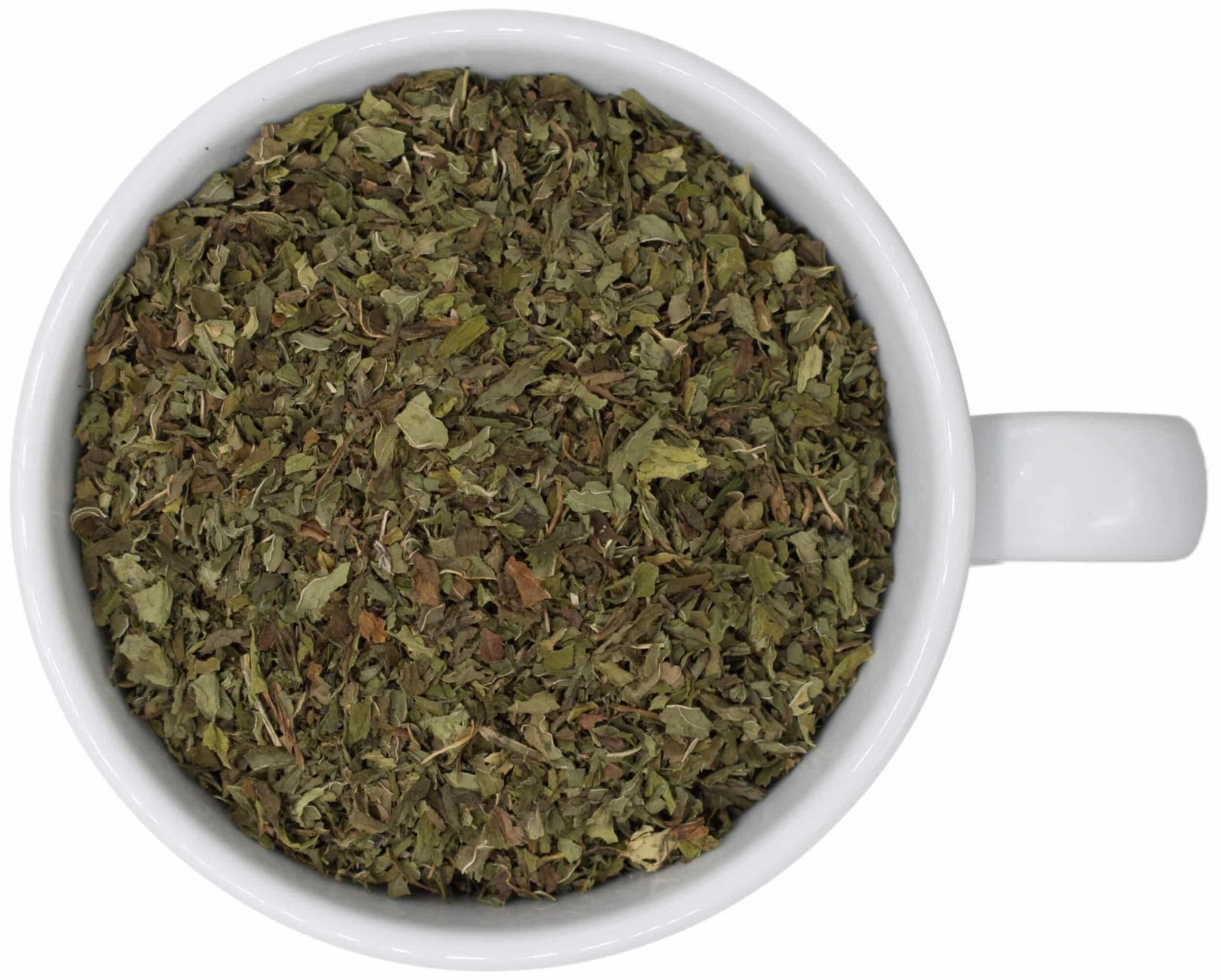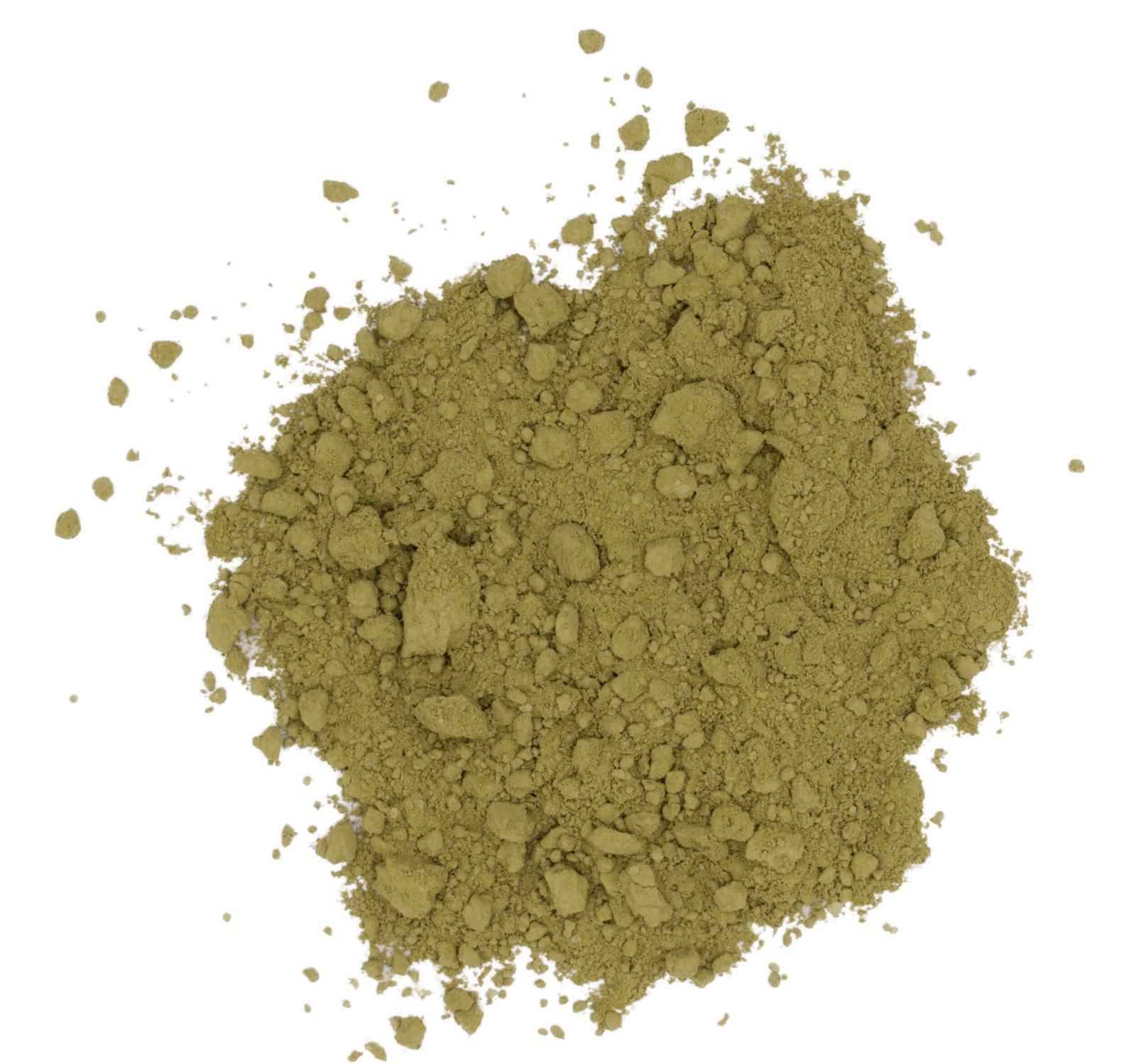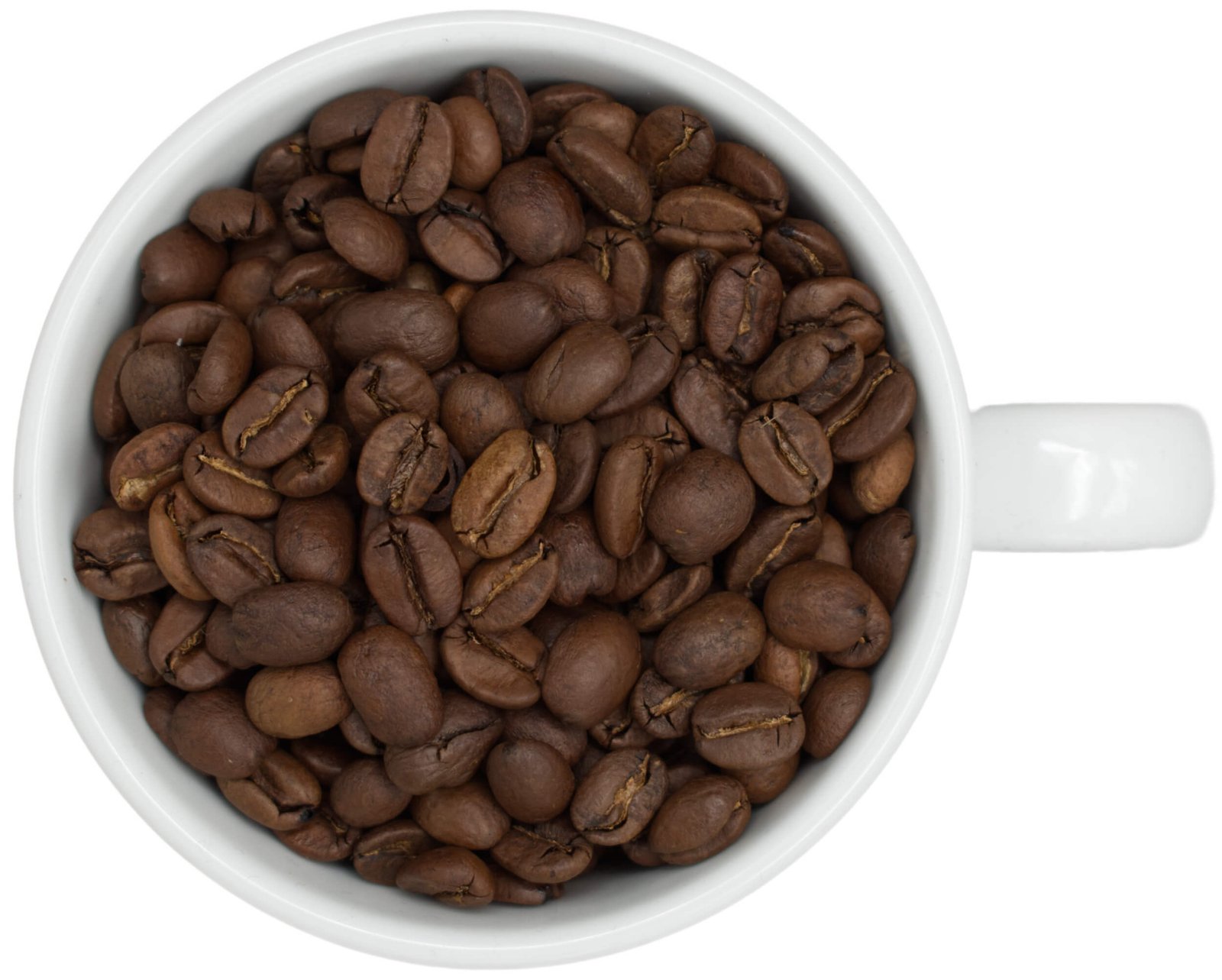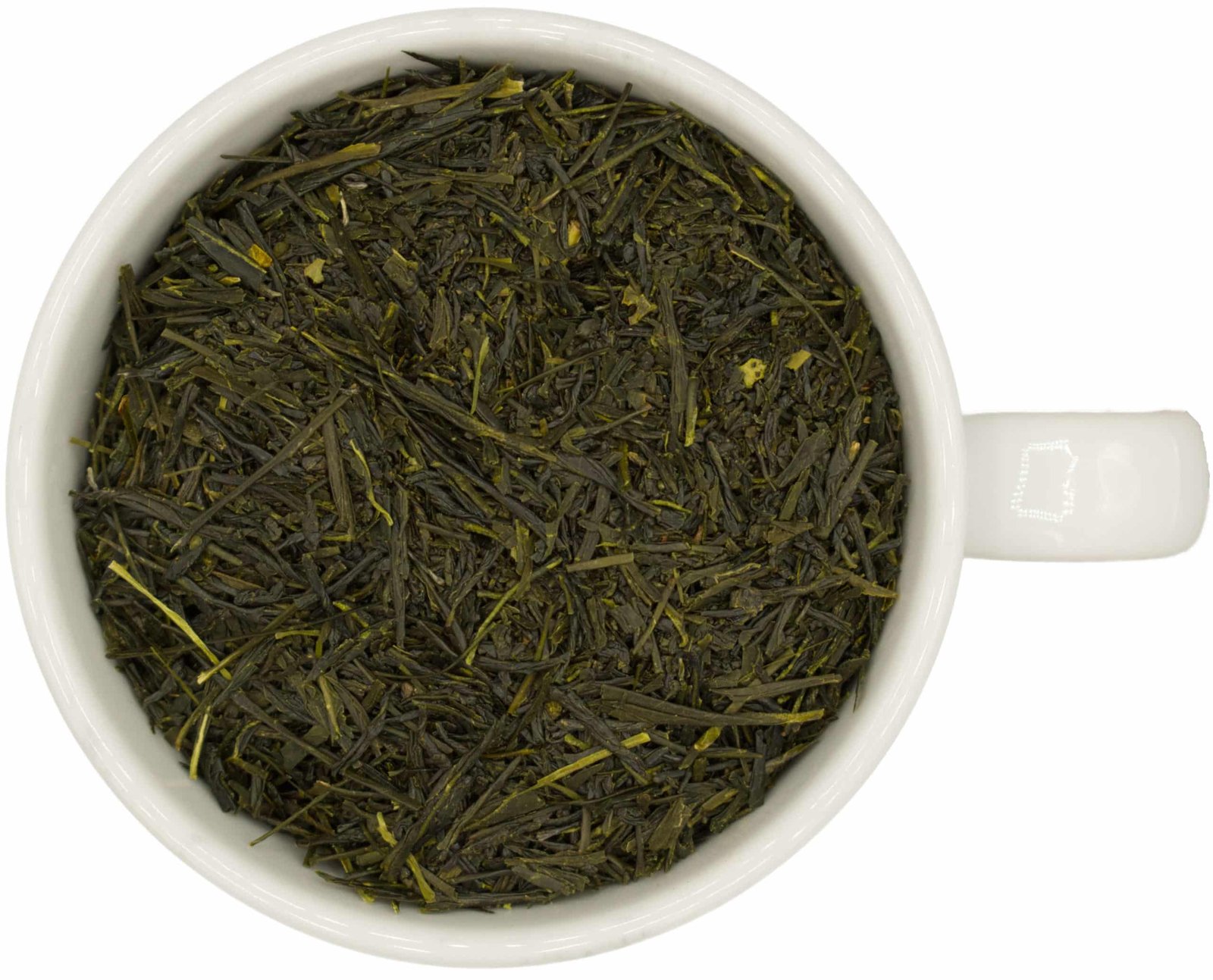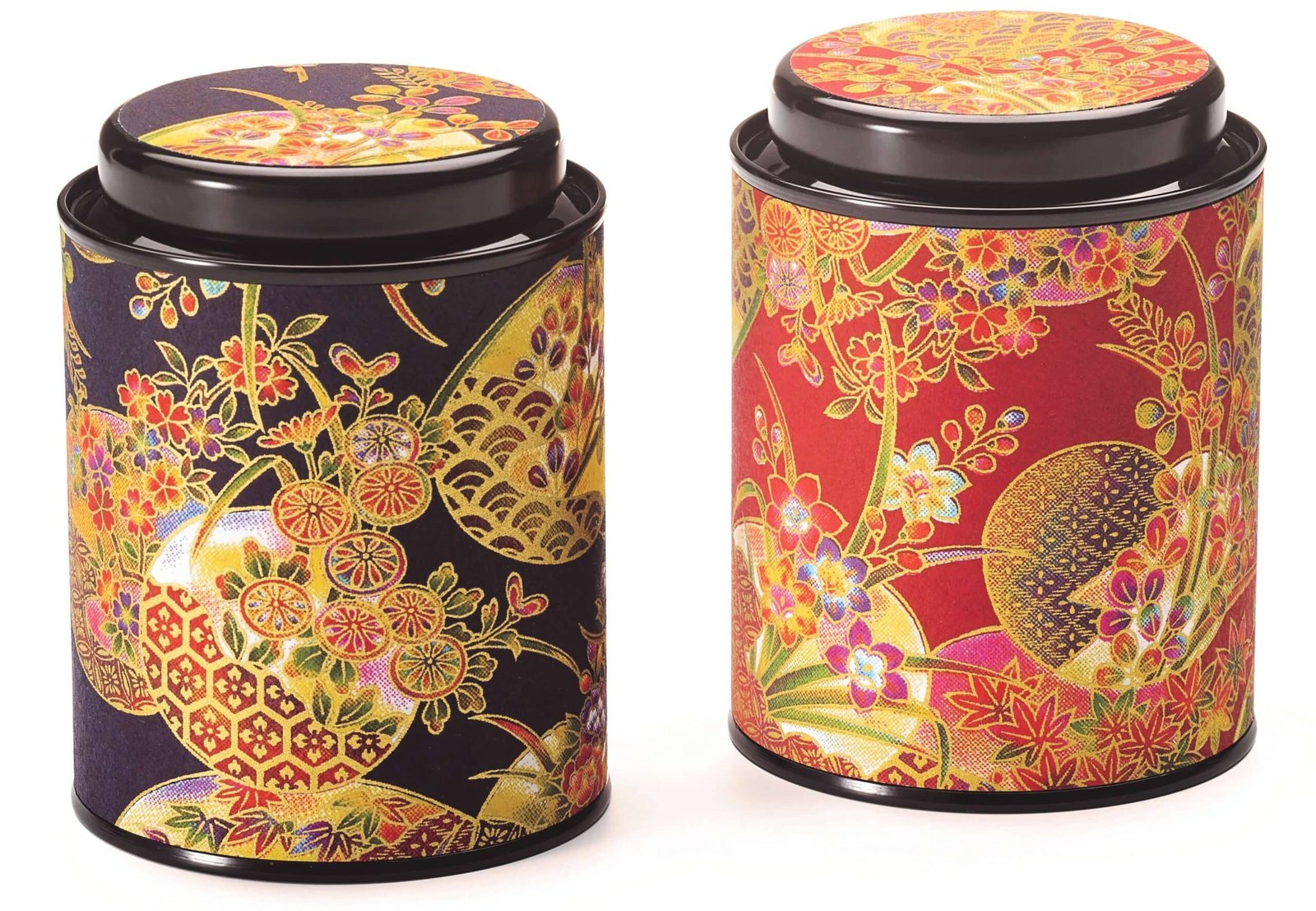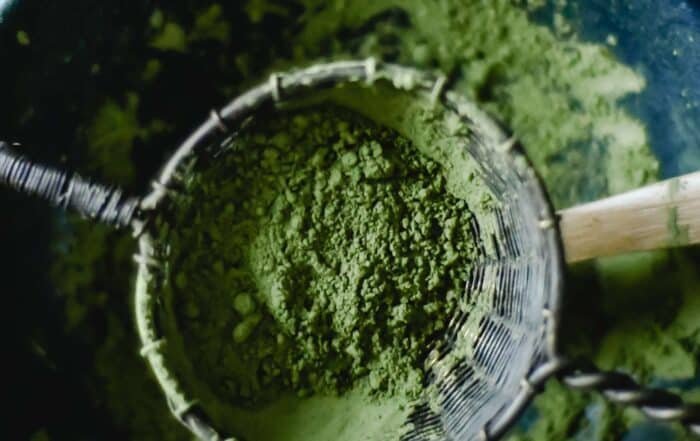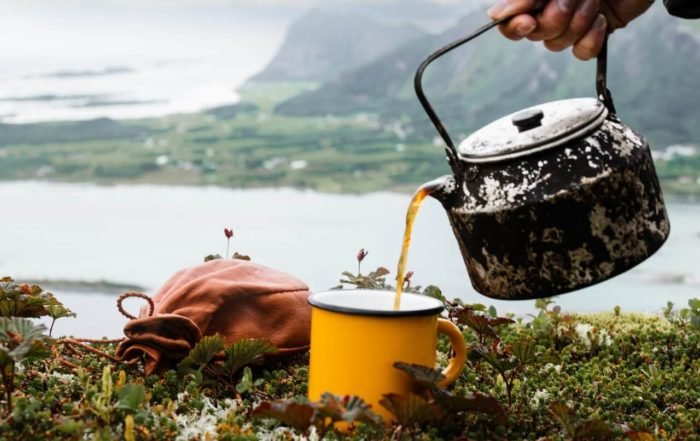So you want to learn how to make tea properly? We are pleased! Because many people prepare tea incorrectly. The result is often a bitter liquid that doesn’t really deserve the name tea.
The three factors in the preparation of tea
When preparing tea, you can influence three (or strictly speaking four) factors: the water used (quality and temperature), amount of tea and brewing time. You can turn all the adjusting screws as you like. The only constant should be the water temperature.
Here you should definitely pay attention to the preparation instructions, because teas usually require fixed water temperatures – depending on the type of tea. Otherwise, you can see tea making as a playground for trial and error. Everything is allowed as long as it tastes good. Don’t get too attached to dogmas. Tastes are different.
Water temperature & quality
Brewing time
Tea quantity
The brewing temperature
As mentioned at the beginning, you should hit the brewing temperature as accurately as possible. Black teas, Rooibos teas and also fruit and herbal teas should be infused at 100°.
Never infuse green teas too hot, this is not good for the taste – about 70° is ideal. If it is a Gyokuro, it may also be 60°.
Yellow teas, white teas and oolongs are brewed at about 80°.
By the way, once water has been completely boiled and left to stand for about 15 minutes, it will have cooled to about 70°. Alternatively, of course, you can use a thermometer.
In the case of high-quality green and black teas, several infusions can also be obtained from the leaves. Greenteas often become much gentler the more often they are infused.
The dosage
The dosage for black and green teas is about 4 – 5 teaspoons to one liter of water for about 1 – 3 minutes of infusion. However, depending on the variety, these recommendations can vary significantly. We at True Tea have listed the recommended preparation for you on the products and on the respective store pages. For fruit and herbal teas, about 4 – 5 teaspoons of tea per 1L of water should also be used and the tea should steep for about 8 – 10 minutes.
Here we have listed the dosages and brewing temperatures:
| Black tea | Green tea | Redbush | Fruit tea | Herbal tea | Yellow teas | Oolong | White teas | |
|---|---|---|---|---|---|---|---|---|
| Brewing temperature | 100 °C | 70 °C | 100 °C | 100 °C | 100 °C | 70 – 80 °C | 80 – 90 °C | 70 – 80 °C |
| Gyokuros: 60 °C | ||||||||
| Brewing time | 1 – 3 min | 1 – 3 min | 10 – 12 min | 10 – 12 min | 10 – 12 min | 1 – 3 min | 2 – 5 min | 2 – 5 min |
| Quantity per liter | 5TL | 5TL | 6 TSP | 6 TSP | 6 TSP | 5TL | 5TL | 5TL |
| Cold infusion method | Cold brew | Ice Brew (Kōridashi) Cold brew | Iced tea | Iced tea | Iced tea | Cold brew | Cold brew | Cold brew |
The water quality
Anyone who owns a water filter would do well to use it to prepare tea. Filtered and soft water allows finer flavors to come through much better. Hard water negatively affects the taste of tea and may cause an oily smear on the cup. These are the essential oils in the tea that settle. That is not bad per se, but delicious is different.
Not sure if your water is hard or soft? Then check with your water supplier or look here.
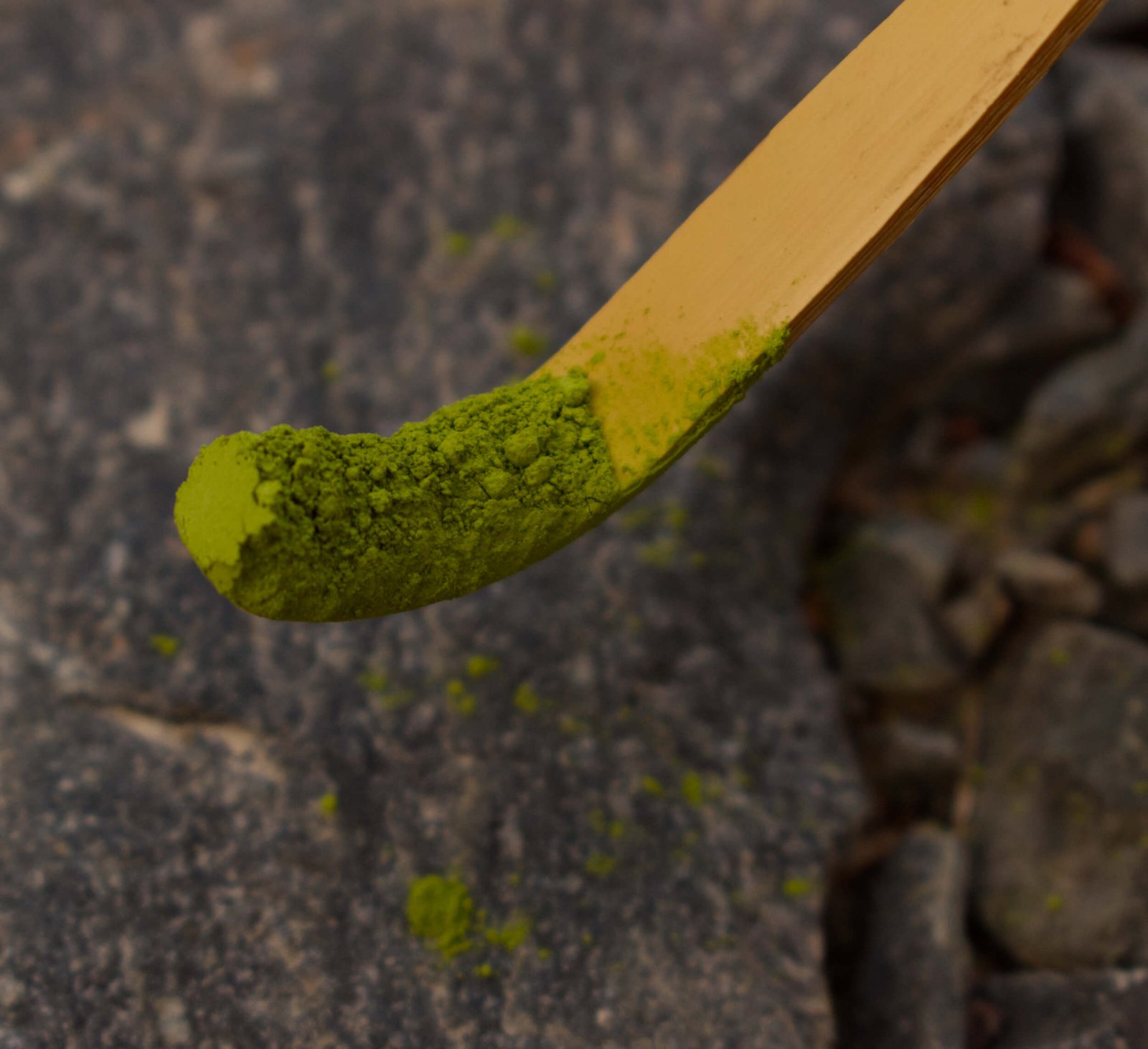
Trend preparations around tea
Cold brew
In recent years, a new wave of trends have appeared in the world of coffees and teas. For example, there is the Cold Brew, where usually green -, yellow or white teas are infused with cold water. The Japanese Gyokuro is a good choice here. Instead of hot water, simply use cold water and extend the infusion time. With an hour of infusion with cold water, you get an incredibly mild and grassy green tea. If you add some lime, the drink almost has the character of iced tea. The advantage of cold brew is that the tea does not bitter and is just as delicious hours later.
Matcha
Another special preparation method concerns matcha. Matcha is green tea ground to a fine powder with stone mills and is typically Japanese. About a teaspoon or matcha spoon of the powder is whipped with about 80° hot water in a bowl with the help of a bamboo broom (also called chasen) in Z-shaped movements until foamy. Since the whole leaf is drunk, matcha has a high caffeine content and is therefore ideal as a coffee substitute in the morning. Here it is worth to take a little more money in hand and buy good Chinese or preferably even Japanese qualities. Low quality matcha tends to smell fishy.
Should you throw away the first tea infusion?
You can brew most orthodox teas 3 – 4 times without any problems. Sometimes you hear the tip to tip away the first infusion. This should improve the aroma or reduce caffeine. Is that really necessary?
Short and sweet answer: No, not really. Pouring away the first infusion probably originates from two areas.
First of all, pour away finds application in the Chinese tea ceremony. The tea leaves land in the pot, water is poured over them for a few seconds and the infusion is finally poured away. This has its origin in the belief that the first cup is meant for Mother Earth.
Also, some pour away the first infusion, believing they are “washing out” impurities through this method. But with our qualities today, this is no longer necessary.
By pouring away the first infusion, you deprive yourself of the first and also the strongest infusion.
Are there any exceptions to this recommendation? Yes! In a Gunpowder, the first infusion is the most herbaceous. If you don’t like these flavors, you can pour away the first infusion. As also mentioned at the beginning of this post, pouring away the first infusion also reduces the caffeine content.
Caffeine is dissolved mainly at the beginning of the brewing process. Should you not want to do this, you can pour away the first infusion.
Which tea filter is the best?
When making tea, you’re spoiled for choice with many different filters and infusion methods. We want to give you a little help and an overview of all the possibilities.
The market for tea makers is enormous: from good old paper filters to stainless steel strainers and tea makers.
The filters
But let’s saddle the horse from the front and take a look at the filters as a first step. Here you have the choice of a wide variety of materials. In general, with filters, it is essential to ensure that the tea leaf has enough room to unfold.
Stainless steel filter
Honestly, this is our favorite filter. We’d be happy to tell you why. Stainless steel is a harmless and easy to clean material. It is also suitable for the dishwasher and on top of that it is also break resistant. Granted, a stainless steel filter is not cheap. In return, however, it ideally lasts for many, many years.
Be sure to use a high-quality stainless steel filter with tight mesh. So the tea leaf stays where it belongs: In the filter. We have a high quality laser perforated stainless steel screen in our range. With its generously calculated volume and two handles, it is your ideal companion in the tea ceremony.
Glass filter
We also have a glass filter in the range. The principle and advantages are similar to stainless steel filters. Our glass filter is also tasteless, dishwasher safe and easy to clean. Of course, with glass there is always a risk of breakage. But: The optics of glass filters are a big plus. You can watch the tea as it rises in your cup. Depending on the tea, this can be a real spectacle. And as we all know, the eye also drinks.
Gaiwan
Preparation with the gaiwan is without question a purist choice. The gaiwan originates from China and consists of three components: a saucer, a bowl and a lid. The tea is placed in the bowl and infused with water. For pouring, the lid is placed at an angle. This holds back the tea leaves when the gaiwan is tilted.
The tea is then drunk from a cup, for example. Alternatively, you can drink directly from the gaiwan. A very charming and stylish way of preparation, we think. Therefore, you can find a porcelain gaiwan in our assortment.
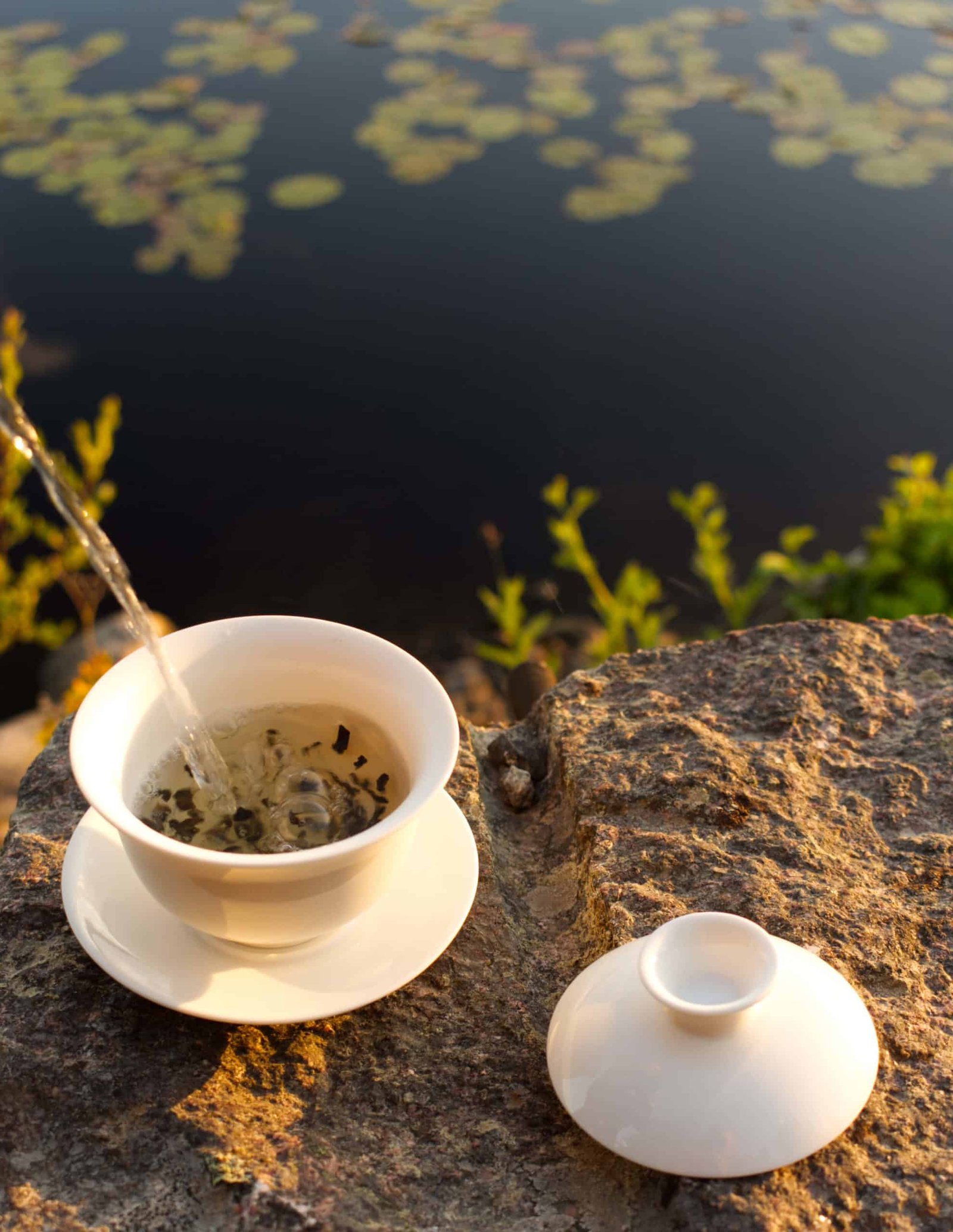
Cotton filter
Cotton filters are an old and ecological variant of the tea filter. This is a small cotton bag in which the tea is placed. The fine meshes reliably retain the tea. Disadvantage: The fibers quickly take on the color of the tea. This quickly makes the filters look unsightly. And worse, they also take on the taste.
If you decide to use cotton filters, then you should use a separate filter for each type of tea (for example, one for fruit tea, one for black tea and one for green tea).
Tulle screens
The part of the pot from which the tea is poured is called the spout. There is a filter for exactly this part: the tulle sieve. It is made of metal and is simply clamped into the grommet. A spiral holds back the tea. Advantage: You use the volume of the entire jug as a filter.
No other method offers more room for development. But you need a second pot to pour the tea into afterwards. Otherwise, the tea would steep too long and, if necessary, re-bittern.
Disposable filter
Disposable filters are a simple method of preparing tea. Here you have the choice of different materials.
The best known form of disposable filters are filters made of paper. As a rule, paper filters consist of a mixture of paper and hemp fibers and a plastic component. The latter ensures that the material does not dissolve on contact with water. It also ensures that the ends can be welded.
Ecologically, such filters are not recommended. On the one hand, it is a mix of materials – this is ultimately burned. It cannot be composted because of the added plastic.
Furthermore, there are filters made of PLA or other plastic fibers such as PP nonwoven. Since these are single-use products, they are not sustainable either.
In addition, disposable filters often do not leave enough room for the tea. For on-the-go use, however, such filters are a great alternative to other methods. These filters are usually attached with special holders. Sometimes a “filter stick” is used, which is a type of toothpick that holds the filter in place.
Tea preparation with the French Press
“Huh, isn’t the French Press for coffee?” you might be thinking right now. Yes, too. However, the French press is a tea and coffee maker. However, you should get two separate French presses for coffee and tea to separate the flavors.
The way it works is very simple. The tea is placed in the French Press and brewed with water. Then the sieve is pressed down after the brewing time. The tea can be poured off and the tea leaves remain in the French Press.
Here you should also quickly drink or decant the contents of the French Press. Because even though the strainer is down, the tea still continues to steep.
Yixing jug
Yixing pot is a pot made of clay. Sometimes these are also available in porcelain. Inside the jug has an integrated filter in front of the spout. You pour here relatively much tea with relatively little water. Brewing time is greatly reduced and you get more infusions from the leaf.
Definitely practical and a new taste experience. The only drawback is that getting the remaining leaves out of the pot can be a bit tricky.
The tea machine
There are now a handful of tea machines. These are sometimes more, sometimes less smart. But above all, they are expensive. You can easily get rid of 500 € for such a device. We think this is wasted money.
Such tea machines often offer assistance modes that automatically control brewing time, dosage and water temperature. They give the feeling that you definitely need these functions. Yet it is not so difficult to prepare tea properly. Feel free to check out our post on this.
Tea machines often use tea from capsules – this is not very ecological. Moreover, they deprive you of the possibility to play with the parameters and thus meet your taste. Ultimately, tea preparation is something very personal.
Okay, the tea is brewed. Where to go with it now?
If you brew tea in the classic way, then you usually use a pot or mug for this. Here, too, there are quite different materials.
Porcelain & Ceramics
Porcelain and ceramic are extremely stable. They are acid resistant, hygienic to clean and usually dishwasher safe. Porcelain is a type of ceramics.
The materials differ in composition and firing temperatures. While ceramics consist mainly of clays, porcelain consists mainly of kaolin, feldspar and quartz. Porcelain is fired at higher temperatures and is therefore more stable. Ceramic often has a yellowish-warm hue and thus often looks more harmonious.
New Bone China and Fine Bone China are other variants. These look more noble due to their translucent properties and haptics. Fine Bone China achieves this by adding bone ash. New Bone China uses less expensive components such as talc.
Whether porcelain, ceramic, New Bone China or Fine Bone China jugs and mugs, they are all relatively heavy.
Glass
Glass jugs and mugs are not necessarily dishwasher safe, but still hygienic to clean at high temperatures. Glasses can go “blind” when they go into the dishwasher, giving them a milky white appearance.
The big advantage of glass, as mentioned above with the filters, is that you can see inside. This looks very classy. If the mug is double-walled, this additionally protects our hands from heat and keeps the tea warm longer.
Glass is a fairly lightweight material. Borosilicate glass is also very resilient.
Plastic preparer
There are more and more tea makers made of plastic. As you have probably already read from one or the other line, we are not necessarily fans of plastic …
The advantage of these preparers is the robustness and also the lightness. This makes them ideal for on the go. Nevertheless, these also usually look relatively cheap and rickety.
Iron jugs and cups
Cast iron jugs and cups are especially popular in China and Japan. Even today, these are produced in a barely changed manner. The cast iron is heated in large furnaces and guided into aluminum molds with the help of a rail system. These are buried in the ground where the iron cools for at least 24 hours. Then a protective enamel layer is applied inside. The outer is painted by hand and sanded sharp edges.
Cast iron is a great material, but it also requires some maintenance. Notice these things in particular:
- Cast iron is sensitive to salt, oil and acid – so do not prepare fruit teas in it.
- Impacts can damage the enamel layer
- Iron cans must be rinsed with clean water and wiped dry after use
- Iron pots are not suitable for heating on gas stoves or ceramic/induction hobs
- Detergents do not get the iron jug well, as well as the dishwasher
Moreover, the formation of rust is a normal process and harmless. If you pay attention to the above points, an iron pot will reward you with a great look and a protective patina on the inside.
We hope this article could help you a little bit with the orientation. There is no wrong or right method of preparation here.
If you have any questions, please feel free to contact us at any time – we’ll be happy to help!
By the way, we also offer a free tea consultation.
Sie sehen gerade einen Platzhalterinhalt von Standard. Um auf den eigentlichen Inhalt zuzugreifen, klicken Sie auf den Button unten. Bitte beachten Sie, dass dabei Daten an Drittanbieter weitergegeben werden.
Weitere InformationenLeave a comment
We think you might like this
Pssst… We’ll write more here!
Making tea: how to make Matcha
At True Tea you will find everything for your Matcha. Want to learn how to ...
What is the CTC tea production?
CTC is a newer production process for black teas. Compared to the traditional method ...
Basic knowledge of tea: How do I prepare tea correctly?
How to properly prepare tea If you do a little research on the topic ...
7 Good reasons for True Tea



